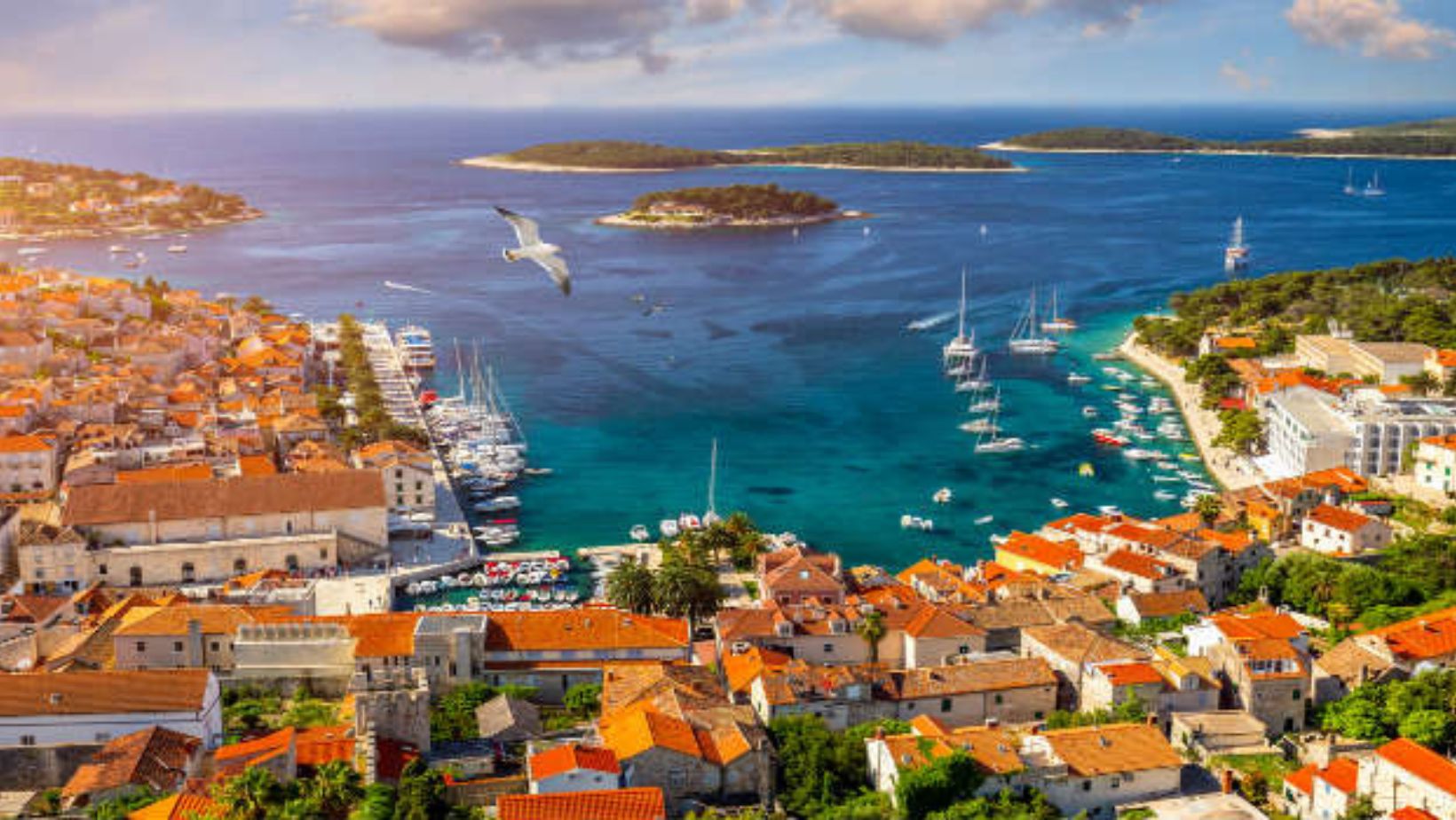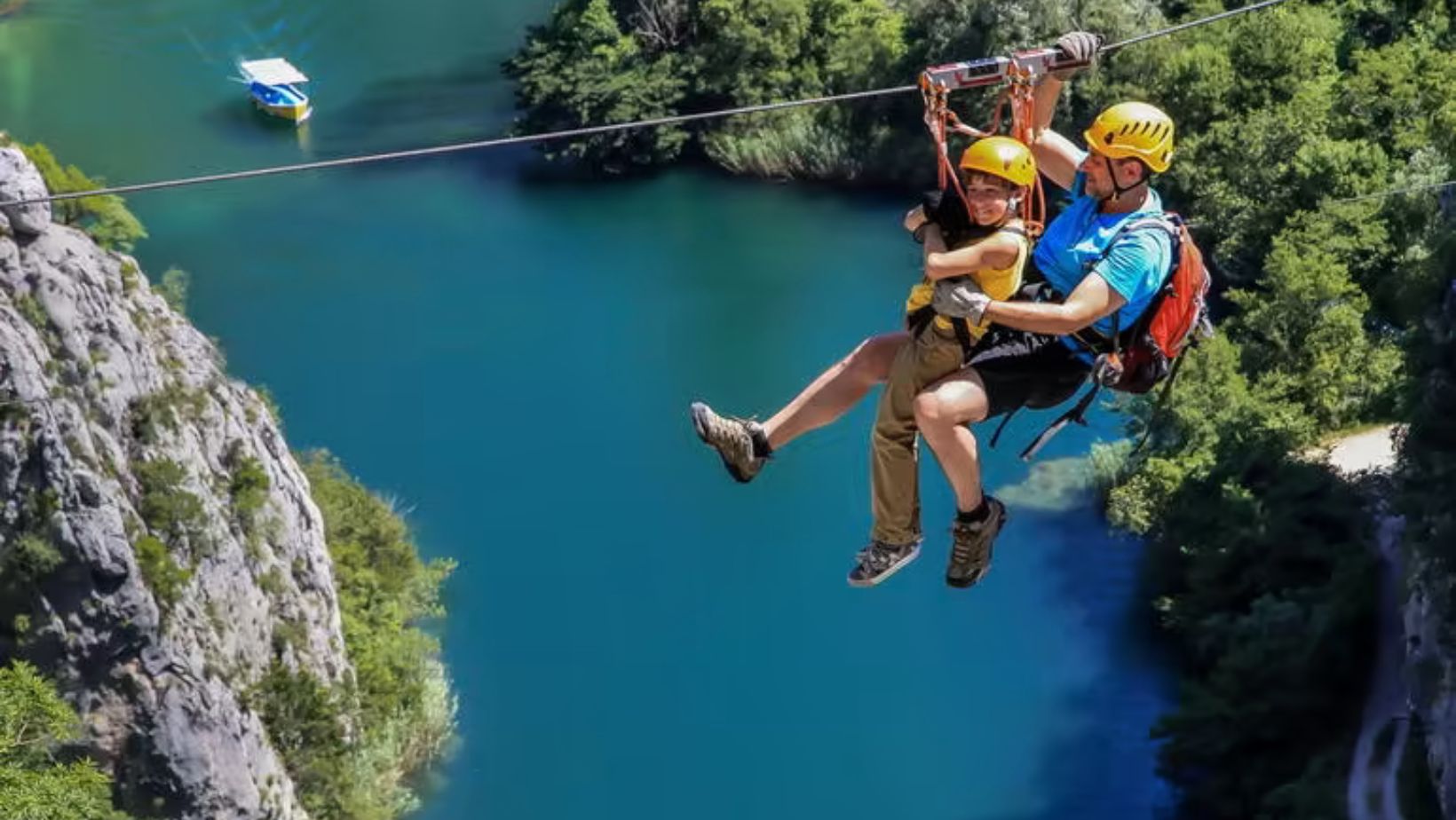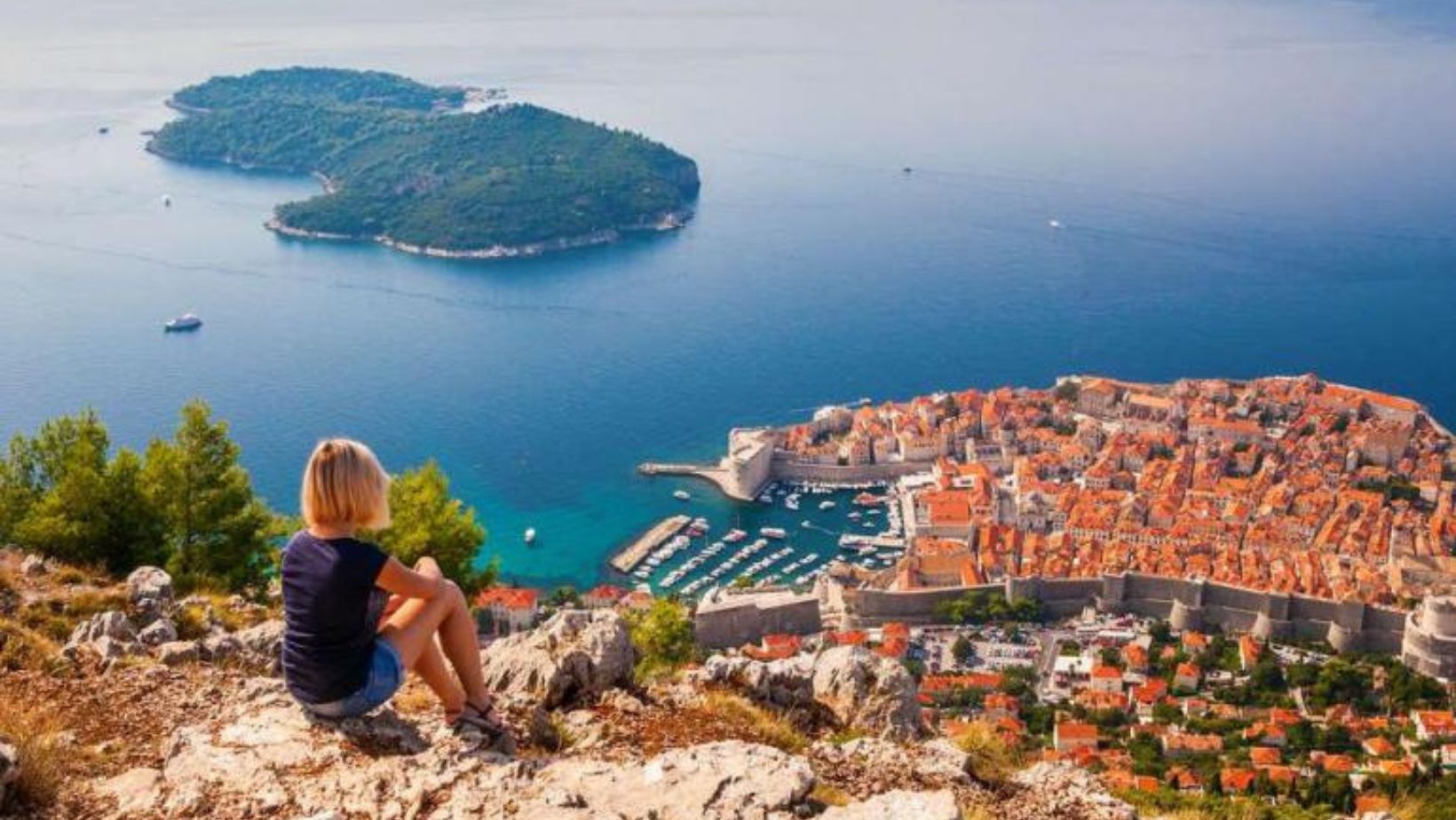The Dalmatian Coast is one of Europe’s best-kept secrets. Stretching along Croatia’s rugged coastline, it’s a paradise of crystal-clear waters, charming towns, and untouched islands. From ancient Roman ruins to vibrant seaside villages, there’s something magical about this region. Once overlooked by tourists, it’s now becoming a must-visit destination for travelers seeking a blend of history, natural beauty, and Mediterranean charm. With its stunning beaches, delicious cuisine, and welcoming locals, the Dalmatian Coast offers the perfect getaway. Let’s dive into why this Adriatic gem is capturing the hearts of adventurers worldwide.
The Natural Beauty of the Dalmatian Coast

The Dalmatian Coast, located along Croatia’s Adriatic Sea, is a paradise known for its natural beauty. The coastline features stunning landscapes, from rugged cliffs to serene bays. Its crystal-clear waters draw visitors from all over the world. The water is perfect for swimming, diving, and sailing, offering views of the vibrant marine life beneath.
The region is dotted with lush islands, each offering unique charm. Some islands, like Brač and Hvar, are known for their scenic vineyards and olive groves. Others, such as Korčula, are rich in history and picturesque medieval towns. The combination of breathtaking landscapes and tranquil nature makes this coast a popular destination for those seeking both relaxation and adventure.
Majestic cliffs line parts of the Dalmatian Coast, creating a dramatic backdrop. The steep cliffs drop into the azure sea, adding to the coastline’s grandeur. Hiking trails wind through these cliffs, offering panoramic views of the Adriatic. The Dalmatian Coast’s natural beauty is a perfect blend of serene seascapes and lush, green landscapes.
Historic Towns and Cities Along the Coast
The Croatian coast is rich in history, with several towns and cities offering a glimpse into the past. Split, a UNESCO World Heritage city, is one of the most prominent. Its historical core is centered around Diocletian’s Palace, built by the Roman emperor in the 4th century. The palace is a remarkable example of Roman architecture, with buildings that have been continuously inhabited for over 1,700 years.
Further south lies Dubrovnik, often called the “Pearl of the Adriatic.” This stunning city is known for its well-preserved medieval walls and historic buildings. Dubrovnik was an important maritime power during the Middle Ages and remains a popular tourist destination. Its Old Town is a UNESCO World Heritage site, famous for its narrow streets, baroque churches, and striking views of the sea.
Both Split and Dubrovnik showcase the blending of ancient architecture with vibrant local culture. Visitors can experience a rich mix of Roman, Venetian, and Slavic influences. The Croatian coast offers a perfect blend of history, beauty, and culture, making it a must-see destination for history enthusiasts and travelers alike.
The Islands of the Dalmatian Coast
The Dalmatian Coast in Croatia is home to some of the most beautiful islands in the Mediterranean, including Brac, Hvar, and Korcula. Each island offers a unique experience, blending stunning landscapes with rich history and culture. Brac is known for its white stone, beautiful beaches, and the famous Zlatni Rat beach. Hvar is a hotspot for vibrant nightlife, luxurious resorts, and picturesque lavender fields.
Korcula is often called “Little Dubrovnik” due to its medieval walls and charming old town. Its narrow streets and historical buildings tell stories of its past. Visitors can enjoy local wine, delicious food, and explore the island’s scenic beaches. Whether you want to relax, hike, or immerse yourself in culture, these islands offer something for everyone.
Best Ways to Explore the Islands
The best way to explore the Dalmatian islands is by ferry or private boat. Ferries connect the islands to the mainland and each other, making island hopping easy. On each island, renting a scooter, bicycle, or car is ideal for discovering hidden gems. Walking tours through historic towns are also a great way to experience the local culture up close.
Ancient Ruins and Roman Influence
The Roman Emperor Diocletian’s Palace, located in Split, Croatia, is one of the most significant remnants of ancient Roman architecture. Built between 295 and 305 AD, it was designed as both a retirement residence for Diocletian and a military fortress. The palace is a grand example of Roman imperial architecture, with its robust walls, gates, and an array of buildings including temples and living quarters. Today, it stands as a UNESCO World Heritage Site, drawing attention for its well-preserved condition and historical importance.
Diocletian’s Palace is a blend of Roman design and functional spaces. The palace was originally divided into a complex of halls, courtyards, and residences, creating a self-contained city. Some structures from the original palace, including the peristyle, a central courtyard, and the Vestibule, are still visible. Modern-day Split has grown around the ancient ruins, integrating parts of the palace into its cityscape.
The site exemplifies Roman influence in the region, showcasing the empire’s mastery in urban planning, military defense, and luxury living. Many visitors are captivated by the seamless merging of ancient ruins with the modern world, where temples and columns stand beside bustling markets and cafes.
Cultural Richness of the Dalmatian Coast
The Dalmatian Coast is known for its rich cultural heritage, deeply influenced by centuries of history. Traditional music and dance are an essential part of the region’s identity, with folk music played on instruments like the tambura and a capella singing. Festivals such as the Split Summer Festival celebrate local traditions, bringing together music, theater, and dance performances. These cultural events offer a glimpse into the vibrant history of the Dalmatian people.
The cuisine of the Dalmatian Coast reflects the blend of Mediterranean and regional influences. Dishes are characterized by fresh seafood, olive oil, and locally grown herbs, offering a taste of the region’s natural abundance. One of the most famous dishes is “pašticada,” a slow-cooked beef stew served with gnocchi. This mix of flavors, along with the use of fresh, seasonal ingredients, defines the Dalmatian culinary experience.
The Dalmatian Coast’s culture is not only rich in food and music but also in the warmth and hospitality of its people. This cultural blend of music, dance, festivals, and cuisine makes it an enchanting destination for travelers seeking an authentic Mediterranean experience.
Outdoor Adventures and Activities

Outdoor adventures offer unique ways to connect with nature, especially when exploring the coastline. Hiking along coastal trails provides stunning views of cliffs, beaches, and ocean horizons. Many coastal areas offer well-maintained biking paths, allowing cyclists to ride along scenic routes. Kayaking is another exciting option, offering the chance to paddle through calm waters and explore hidden coves.
These activities offer a great way to enjoy the fresh air and natural beauty of coastal environments. Hiking can range from easy, flat paths to more challenging mountain routes, providing options for all levels. Cycling along the coastline allows for faster travel while still enjoying the scenery. Kayaking offers the unique perspective of being on the water, surrounded by marine life and coastal features.
Each of these activities presents an opportunity to see the coastline from different angles. You can observe wildlife, visit secluded beaches, or simply enjoy the peace of nature. Whether you’re a beginner or an experienced adventurer, there’s always a new challenge along the coastline. These outdoor activities are perfect for anyone looking to immerse themselves in the beauty of coastal landscapes.
Diving and Exploring the Underwater Beauty
Diving opens a whole new world beneath the surface, allowing you to explore vibrant coral reefs, shipwrecks, and marine life. It’s an exciting way to discover the underwater beauty that many never see. Popular dive spots offer diverse ecosystems, from colorful fish to fascinating underwater structures. Whether you’re a beginner or an expert, diving is a thrilling way to experience nature’s hidden wonders.
The Best Beaches of the Dalmatian Coast
The Dalmatian Coast of Croatia is famous for its stunning beaches, from lively spots to hidden gems. One of the most famous beaches is Zlatni Rat, located on the island of Brač. Known for its unique shape, it stretches into the sea and changes depending on the wind. Zlatni Rat is a perfect place for sunbathing, swimming, and water sports.
Another popular beach is Bacvice, situated in Split. Bacvice is known for its sandy shore, which is rare in Croatia, making it a favorite among locals and tourists alike. The beach is also famous for the traditional game of picigin, a fun, fast-paced ball game played in shallow water.
For those seeking more secluded spots, the Dalmatian Coast offers hidden coves and quiet beaches. Many of these can be accessed by boat or short hikes, offering a peaceful retreat away from the crowds. Places like Stiniva Beach on the island of Vis are known for their stunning cliffs and clear waters. These hidden beaches provide the perfect escape for nature lovers.
The Coastal Towns: A Step Back in Time
Exploring the medieval charm of towns like Trogir and Sibenik takes visitors on a journey through history. Both towns are located along Croatia’s stunning coastline and are rich in cultural heritage. Trogir, a UNESCO World Heritage site, is known for its well-preserved Romanesque architecture. Narrow cobblestone streets lead visitors past stone buildings that have stood the test of time.
Sibenik, another historical gem, boasts an impressive medieval atmosphere. The town’s famous St. James Cathedral, also a UNESCO site, stands as a symbol of architectural brilliance. The fortress walls and watchtowers of Sibenik offer breathtaking views of the Adriatic Sea. As you wander through the ancient streets, you can imagine life centuries ago.
The cobblestone streets in both towns invite exploration. Visitors can walk in the footsteps of past generations while admiring historical landmarks. The blend of history, culture, and stunning coastal views makes these towns an unforgettable experience. Trogir and Sibenik provide a unique glimpse into Croatia’s medieval past.
Travel Tips for Visiting the Dalmatian Coast

The best time to visit the Dalmatian Coast is during spring (April to June) or early autumn (September to October). The weather is pleasant, with fewer tourists, making it ideal for sightseeing. The summer months (July and August) are the busiest, but they offer vibrant festivals and lively beaches. For those seeking quieter trips, avoid peak tourist seasons.
You can reach the Dalmatian Coast by flying into Split or Dubrovnik airports. From there, buses, ferries, and rental cars are popular options for traveling along the coast. Ferries connect various islands, so you can easily explore places like Hvar, Korčula, and Brač. Public transport is also efficient, but renting a car gives you more freedom to explore hidden gems.
For accommodations, consider staying in seaside hotels, private apartments, or traditional guesthouses known as “sobe.” Many coastal towns offer charming, family-run establishments that give you a more authentic experience. Make sure to book in advance, especially during peak season, as demand is high. Locally, it’s customary to greet with a friendly “dobar dan” (good day) and show respect for local traditions, such as quiet dining in small towns.
Conclusion: Dalmatian Coast
The Dalmatian Coast offers a captivating blend of natural beauty and rich cultural history. From its crystal-clear waters and stunning islands to its ancient towns like Split and Dubrovnik, the region provides a diverse and unforgettable experience. Whether you’re drawn to exploring historic landmarks, relaxing on pristine beaches, or indulging in local cuisine, the Dalmatian Coast has something for everyone. Don’t miss the opportunity to immerse yourself in this stunning destination. Plan your trip to the Dalmatian Coast and create memories that will last a lifetime.
FAQs
What is the best time to visit the Dalmatian Coast?
The Dalmatian Coast is ideal for visits during the spring (April to June) and early fall (September to October), when the weather is pleasant, and the summer crowds are smaller. July and August are the peak tourist months, with warmer temperatures and more activities.
What are the must-see cities along the Dalmatian Coast?
Key cities to explore include Split, known for its Roman heritage and the UNESCO-listed Diocletian’s Palace; Dubrovnik, a medieval marvel; and Zadar, with its Roman ruins and modern Sea Organ. Each offers unique views and cultural experiences.
Are there any hidden gems on the Dalmatian Coast?
Yes! Besides the popular cities, consider visiting the peaceful island of Vis, with its hidden coves and clear waters, or the charming town of Trogir, known for its preserved medieval architecture. These spots offer a more relaxed and less crowded experience.
What outdoor activities can I do on the Dalmatian Coast?
The Dalmatian Coast offers a variety of outdoor activities, including sailing between its many islands, hiking in national parks like Krka and Paklenica, and enjoying watersports like kayaking, snorkeling, and diving in crystal-clear waters.
Is the Dalmatian Coast family-friendly?
Absolutely! The Dalmatian Coast is a great destination for families, offering kid-friendly beaches, historical sites, and plenty of opportunities for outdoor fun. Many towns and islands cater to all ages with safe, accessible attractions and calm, shallow waters perfect for children.

